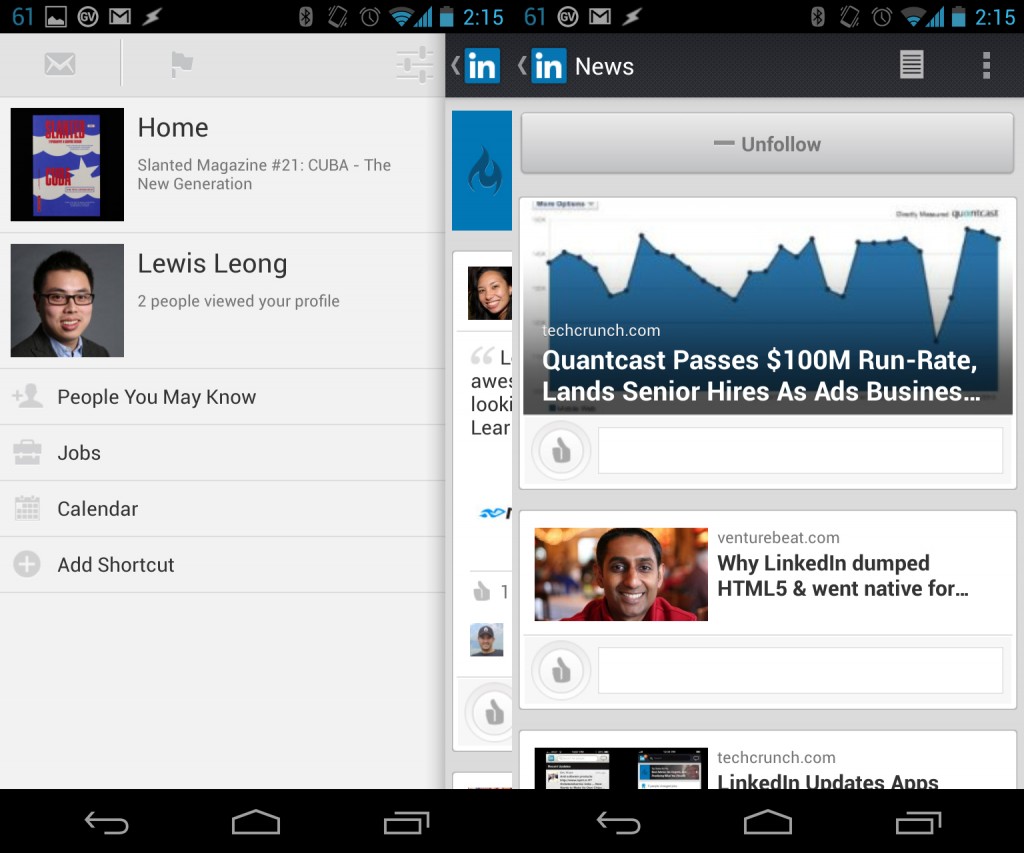![]() LinkedIn updated its Android and iOS with a new interface but also a new backbone. Previously, LinkedIn’s mobile apps used HTML5 to maximize compatibility with different devices and web users, but now the company has ditched HTML5 for native code. There seems to be a pattern with companies rewriting their apps to native code instead of using HTML5. Late last year, Facebook completely rewrote its Android application, also abandoning HTML5, in order to create a responsive app. The HTML5 based Facebook app was notoriously laggy.
LinkedIn updated its Android and iOS with a new interface but also a new backbone. Previously, LinkedIn’s mobile apps used HTML5 to maximize compatibility with different devices and web users, but now the company has ditched HTML5 for native code. There seems to be a pattern with companies rewriting their apps to native code instead of using HTML5. Late last year, Facebook completely rewrote its Android application, also abandoning HTML5, in order to create a responsive app. The HTML5 based Facebook app was notoriously laggy.
Venture Beat spoke with Kiran Prasad, senior director for mobile engineering for LinkedIn, about why the company ditched HTML5 for native code. The interesting thing is that LinkedIn didn’t switch to native code because of performance issues but because the app ran out of memory. Here’s what Prasad had to say:
“We have definitely shifted from HTML5 to native. The primary reason for that is, we’re seeing that more and more people are spending more time in the app, and the app is running out of memory. It’s not performance issues, like speed or rendering, but it’s still a big problem. The second reason we’ve gone native is trying to get some of the animations — the spinners and the way they work — getting that smoothness, we felt like we needed native to really do that well.”

LinkedIn’s mobile apps aren’t just changes in code. The app has been redesigned to bring news front and center, hoping to turn LinkedIn into a serious source of news for professionals. The app was also designed to foster and make discussion simple by letting users comment and “like” directly from the stream.
You can download LinkedIn for iOS and Android right here on Softonic.
Source: LinkedIn | Venture Beat

